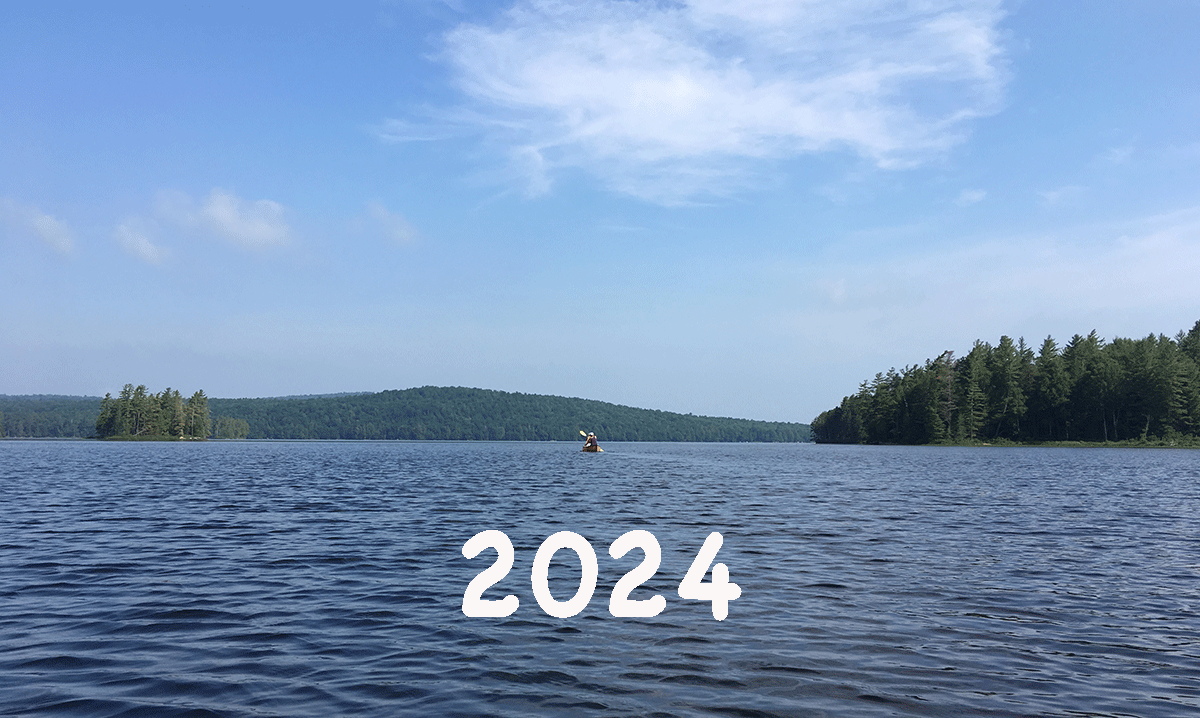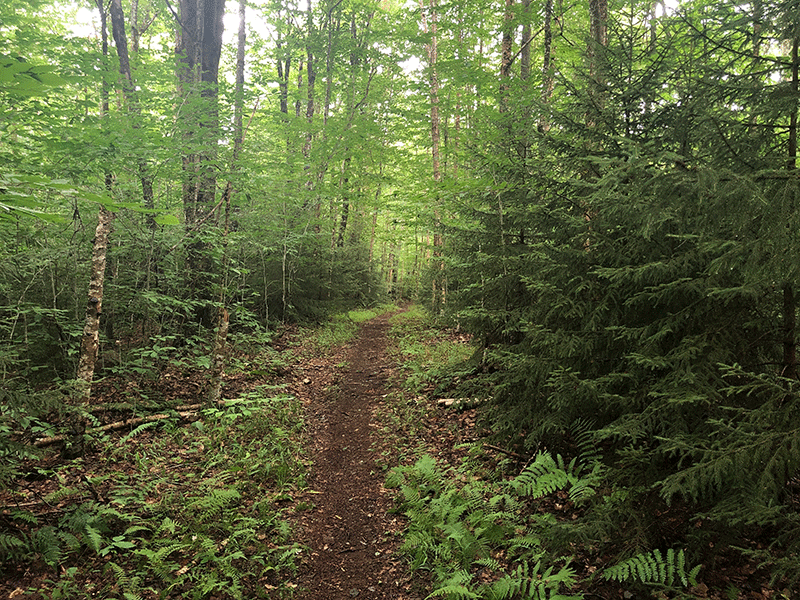In 2024, Protect the Adirondacks has an ambitious agenda to impact on a broad range of issues and defend the great open spaces of the Forest Preserve, waters, wildlife, and rural communities of the Adirondack Park. We employ a variety of programs to pursue our goals including advocacy, independent public oversight, grassroots organizing, research, education, and legal action. The list below enumerates our priorities for 2024 for a spectrum of projects and programs that will help to strengthen environmental protections and build viable communities in the Adirondack Park. This is not a complete list as new issues are sure to arise throughout the year.
Advocacy
This year, we’ll work with other Adirondack and regional groups on a range of FY25 budget priorities in the Environmental Protection Fund (EPF), including support for various Adirondack Park groups/institutions. Click here to read a group budget request letter. Two top priorities in the EPF are funding for long required, yet never undertaken, “carrying capacity” studies and Land Protection funding to support the goals of the 30 by 30 law. In 2023, PROTECT published 20% in 2023: An Assessment of the New York State 30 by 30 Act outlining the challenges New Yorkers face with the new 30 by 30 law that aims to protect 30% of New York’s lands and inland waters by 2030. Our research shows that in New York so far, we’ve protected around 20%, with approximately 6.2 million acres of protected lands out of over 31 million acres within New York State. PROTECT is working to make sure that the State’s 30 by 30 goals are central to plans to revise the Open Space Conservation Plan. We also believe that open space conservation plays a critical role in the state’s Climate Action Plan that guides greenhouse gas emission reductions. The Department of Environmental Conservation needs to expand its land protection staffing to expedite its land purchasing capabilities.
Other priorities include support for theTimbuctoo Summer Climate and Career Institute the Survey of Climate Change and Adirondack Lakes Ecosystems (SCALE) study. We advocated for support for the Paul Smith’s College Adirondack Watershed Institute, Adirondack Experience, SUNY ESF Newcomb Visitors Interpretive Center, the Paul Smith’s College Visitors Interpretive Center, and the Adirondack Diversity Initiative. We’ll be helping to host an Adirondack Park Environmental Lobby Day in February 2024.
In 2024, PROTECT will prioritize three bills in 2024: 1) Wolf Protection in New York State (click here for background info); 2) Mandatory septic system inspections at time of property transfer; and 3) the NYS Wildlife Crossings Bill. We’re also exploring an Adirondack Community Housing Act, which we hope can be put together. We will work with bill sponsors in the State Assembly and State Senate and help to build coalitions to support these bills.
Given the schedule for passage of a Constitutional Amendment, 2024 will see intense action for “First Passage” of amendments. Under NYS law, a constitutional amendment must receive “First Passage” in one legislative session, followed by “Second Passage” in the next legislative session, followed by a statewide vote of the people. Three draft constitutional amendments are proposed, or in the works. Protect the Adirondacks supports two and opposes one.
In 2024, PROTECT will support First Passage for a new “3-prisons amendment” to allow the state to dispose of and repurpose three decommissioned state prisons in “Forest Preserve Counties.” Under state law, all land owned by the State of New York in Forest Preserve counties, as identified in the State constitution, is Forest Preserve, regardless of how it’s been used, and can only be removed from state ownership through a constitutional amendment. These three defunct prisons are Camp Gabriels (Franklin County, 92 acres), Moriah Shock (Essex County, 60.18 acres), and Mount McGregor(Saratoga County, 54 acres). This amendment would allow the state to sell around 206 acres, and dozens of buildings, comprising these three facilities, or transfer them to a local government or non-profit seeking to utilize the former prison complexes. In exchange, the state will purchase at least 2,500 acres of new lands for the Forest Preserve to compensate the Forest Preserve. In this way, these facilities can be repurposed for some community and public benefit and hopefully be added back onto the local tax rolls. A draft amendment solely for Camp Gabriels has been around for more than a decade and has failed to move ahead. We believe that it makes sense to deal with all three decommissioned sites in one amendment.
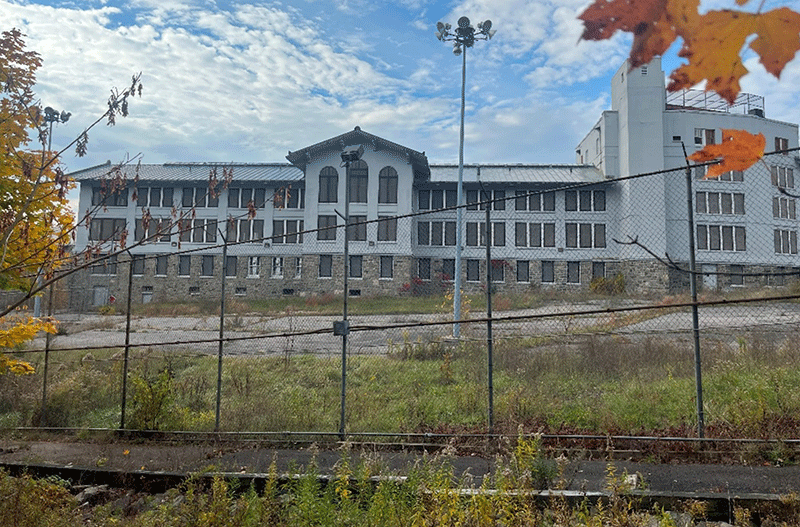
One of the main buildings at the closed Mount McGregor prison. This facility can only be repurposed once it has been removed from the Forest Preserve.
Protect the Adirondacks opposes “first passage” of an amendment to privatize six acres of Forest Preserve lands on the north shore of Debar Pond for a transfer to a private institution. These lands are currently owned by the People of the State of New York in the Forest Preserve, and have significant open space, natural resource, and public recreational value because they provide unfettered public access to a remote and scenic lake. PROTECT supports keeping this land in the Forest Preserve so that visitors can enjoy a wild lake experience similar to Lake Lila in the William C. Whitney Wilderness Area. This proposed constitutional amendment is a bad deal for New Yorkers and for the Forest Preserve. Please sign our petition to help block this amendment and help us to save Debar Pond.
The third amendment is one that PROTECT is exploring for a new amendment to terminate the 2013 “NYCO Amendment.” This amendment authorized “mineral exploration” in the Jay Mountain Wilderness Area of the Forest Preserve by NYCO Minerals, Inc., a mining company now owned by an international conglomerate, with a processing mill in Willsboro and two mines in simultaneous operation in Lewis. Its longstanding mine on the Seventy Mountain Road borders the Jay Mountain Wilderness and the 2013 amendment authorized the company to explore 200 acres in in the Forest Preserve for its mineral content and eventual purchase. To date, the company drilled more than a dozen test pits and cut roads and drilling platform areas in the Wilderness area, but has never submitted an offer to buy the lands. The amendment was opened-ended, with no date for completion. A new amendment would require that NYCO either complete the purchase within a required timeframe or the amendment terminates. Protect the Adirondacks opposed this amendment in 2013, which passed narrowly. After the amendment passed, PROTECT researched and discovered how state agencies acted as private lobbyists for NYCO and helped to remove lands from Wilderness protections. Our expose was picked up by The New York Times.
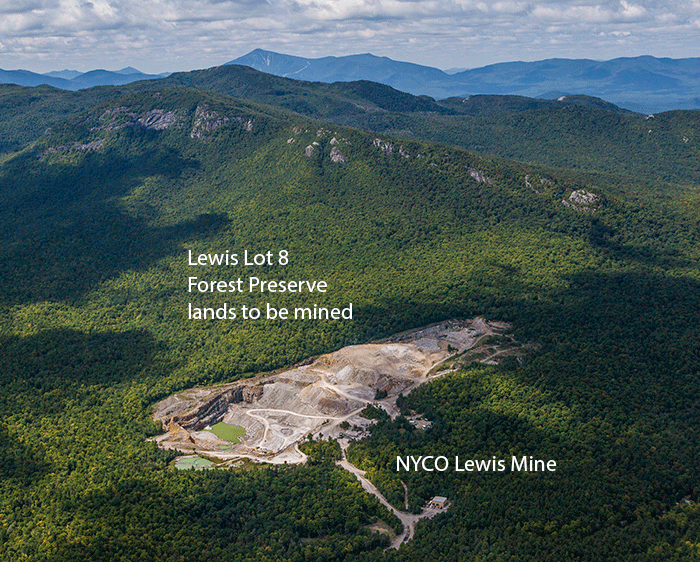
An aerial of the NYCO Minerals, Inc., mine that has long bordered Forest Preserve lands. 200 acres known as “Lewis Lot 8”, were authorized in the 2013 constitutional amendment be transferred from the Jay Mountain Wilderness area to the private company NYCO Minerals, Inc., so that it can expand its open pit mine. After 10 years, the company has not made any effort to complete this purchase and Protect the Adirondacks believes that there should be a new amendment to put a date for completion.
The new railway line conversion to a multi-use trail between Saranac Lake and Lake Placid, completed in the fall of 2023, is probably going to be very successful. We believe that the completion of the next section from Saranac Lake to Tupper Lake will be even more successful. PROTECT will advocate to build upon the success of this new trail to convert the North Creek to Saratoga rail line to a multi-use trail.
Independent Public Oversight
Protect the Adirondacks places great importance on its job as a watchdog over the management and regulation of the Adirondack Park and Forest Preserve by state agencies and local governments. This is work that requires a lot of time and effort, but is necessary to hold accountable those in power and we push transparency in public administration of New York’s environmental laws. Our Public Comments page lists dozens of policy review letters that we submit each year.
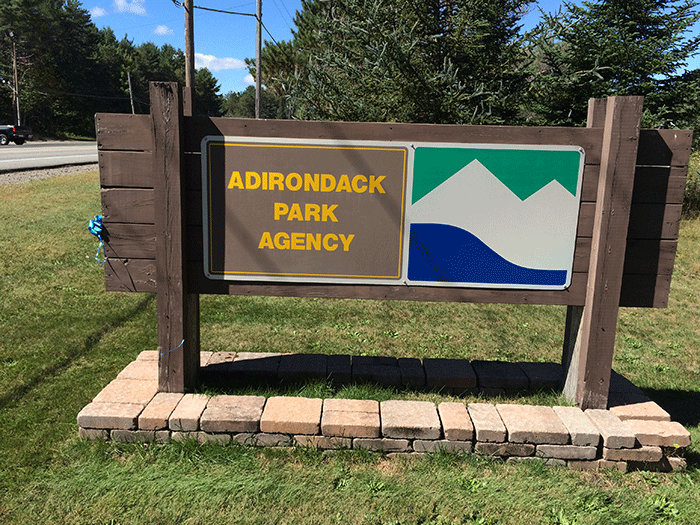
The Adirondack Park Agency is located in Ray Brook, NY, and under law is the lead agency for planning in the Adirondack Park.
Adirondack Park Agency: PROTECT will continue its independent public oversight of APA’s administration of the Land Use and Development Plan and oversight of the management of the Forest Preserve. Major developments under APA review, include the 120-unit luxury development in Jay and a massive expansion of the Barton Mines mountaintop mine on Ruby Mountain.
PROTECT will also work on efforts to reform the Adirondack Park Agency (APA) so that it upholds the APA Act and other state laws. The APA is at the weakest point in its 50-year history, suffering from poor leadership, and casual compliance with state environmental laws. PROTECT will advocate for new APA Board members, who are dedicated to impartially upholding the law, and seek to make the APA once again into the lead agency in the Adirondack Park for park-wide planning. PROTECT will also push for greater transparency at the APA form publishing permits, meeting minutes, and providing historic materials. PROTECT is also working on a revision of the APA Act, which is being circulated for feedback and input.
Department of Environmental Conservation: PROTECT will continue its independent public oversight of DEC’s management of the Forest Preserve as well as land acquisition and wildlife management.
Beyond advocating for EPF funding for land protection, we’ll advocate for specific projects in DEC Regions 5 and 6 as part of the revision of the Open Space Conservation Plan. Please sign our online petition supporting state acquisition of the 36,000-acre Whitney Park. We’ll hold up the 30 by 30 goals as we push for an ambitious new Open Space Conservation Plan.
2024 will see the “scoping” phase of the new 10-year NYS Wildlife Action Plan due for completion in 2025. Planning for the return of extirpated species has been in and out of the state’s wildlife plans in the past, most recently out in the 2015 plan. PROTECT will push for provisions in the new 2025 plan for restoration of extirpated species, like wolves and cougars. The State of Colorado just released its first pack of five wolves as part of a planned restoration, so this is something that can be done.
One part of our independent public oversight work on the DEC is participation in various advisory committees or stakeholder committees. In 2024, we plan to continue to serve on three committees. PROTECT will continue to participate on the Forest Preserve Advisory Committee (FPAC). This is largely an information sharing forum, where issues are discussed, but few formal recommendations are made to the department.
PROTECT will also continue its participation on the Forest Preserve Trails Stewardship Working Group. This group was formed to help the department revise trail standards after the DEC was found to have violated the Forever Wild clause. It’s likely that this forum will continue through much, if not all, of 2024. The main work ahead for this group is the completion of a new set of trail construction and maintenance standards. In 2023, this group helped the DEC reform its management practices for its development of Work Plans for various Forest Preserve projects.
We’re also participating on stakeholders group to provide feedback on the development of the new Visitor Use Management (VUM) plan for the central High Peaks Wilderness in the Adirondacks. This plan is being developed by a private consulting firm with a contract with the DEC. VUM was developed by the National Park Service and has been widely implemented at many National Parks and National Forests. Use of VUM has long been advocated by PROTECT and the Adirondack environmental community, and was a central recommendation by the High Peaks Regional Advisory Committee.
We anticipate the release of some new draft Unit Management Plans this year. Draft UMPs in the queue for possible release include Wilcox Lake Wild Forest, Ferris Lake Wild Forest, and Lake George Wild Forest. The Debar Mountain Wild Forest UMP is tied up by the controversy over the future of the buildings at Debar Pond, but could also be re-released in 2024 with revisions from the draft released in 2020. PROTECT will monitor UMP development and comment on all DEC drafts and APA conformance reviews.
Other issues that we’ll be watching concern the way in which the DEC-APA attempt to implement their new controversial “No Material Increase” (NMI) interpretation. APA-DEC approved a controversial NMI interpretation of the Adirondack Park State Land Master Plan in 2023. The real test of this interpretation will be when and how it is applied in draft UMPs.
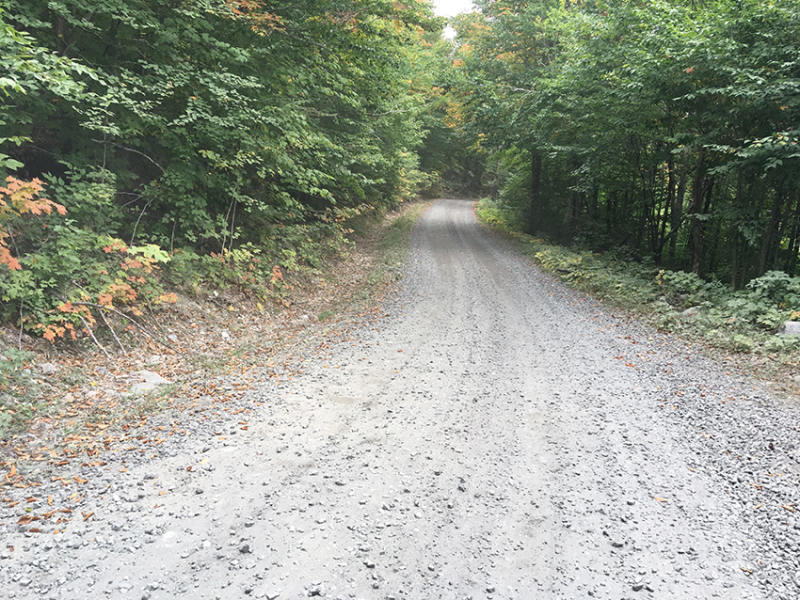
A section of the Gulf Brook Road. The mileage of roads that state agencies authorize in the Forest Preserve in upcoming Unit Management Plans will be carefully scrutinized.
A regular part of our watchdog work involves getting out into the Forest Preserve. In 2024, we’ll be monitoring various areas for high use that’s damaging an area’s natural resources, illegal All Terrain Vehicle trespass, and new trail construction projects, especially the new sustainable trail completed on the north side Mount Van Hoevenberg, and new trail under construction to Cascade and Porter mountains.
We will also continue to monitor the actions of local governments in the Adirondack Park and of the Olympic Regional Development Authority (ORDA), the Department of Transportation, and the Lake George Park Commission. PROTECT will also push for new representation among the Commissioners on the LGPC, some of whom have served for decades. We will comment on and participate in the process, as needed, where there are major projects or new policies at the LGPC. We will monitor the Park Commission’s controversial proposed use of ProCellaCor in Lake George to control invasive milfoil.
Legal Action
In 2024, PROTECT will continue its work as a plaintiff or co-plaintiff in three existing lawsuits and will explore opportunities for new lawsuits. We take the decision to bring a lawsuit very seriously and it’s always the last resort after all other means have been exhausted.
In 2024, we’ll continue with our lawsuit filed against the DEC challenging the department’s reconstruction of a former logging road in the High Peaks Wilderness Complex. The road had previously been reclaimed and rewilded by DEC pursuant to an approved Work Plan, which called for removing bridges and culverts and constructing a series of pits and mounds in the road corridor to recreate a natural forest landscape and accelerate forest regrowth. In the fall of 2021, DEC re-entered the road corridor and began using heavy machinery, including a bulldozer and excavator, to destroy and remove the previously constructed pits and mounds. In this case, we’re standing up for Wilderness. We’re currently awaiting a decision on preliminary motions on this case.
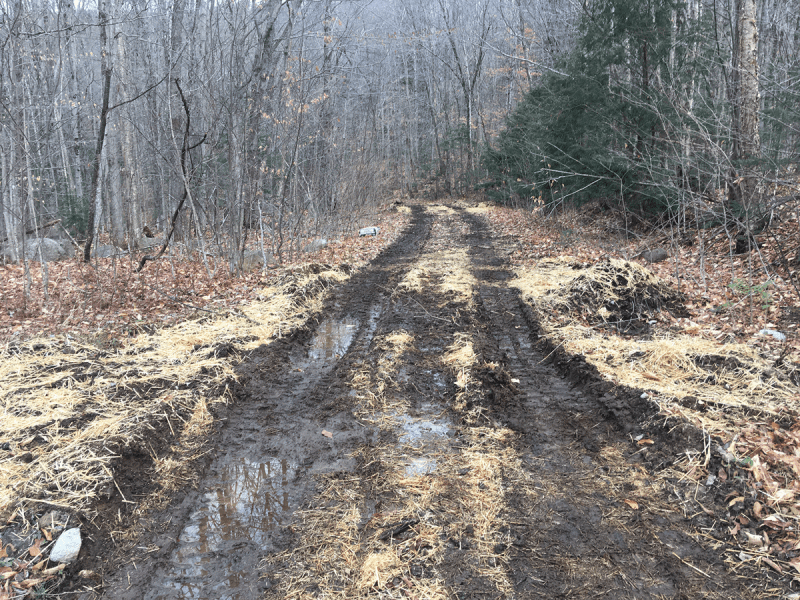
A section of the reconstituted East River Road in the High Peaks Wilderness during reconstruction work in the fall of 2021 by the DEC.
PROTECT and its co-petitioner, the Adirondack White Lake Association, have appealed a decision from Supreme Court, Oneida County, dismissing a lawsuit challenging the APA’s approval of a major new mine in the White Lake residential community in the Town of Forestport. In this case we’re standing up for transparency and adherence to the APA Act and agency regulations during project review. Oral arguments are set for January 2024 in Rochester.
In 2023, PROTECT filed a lawsuit against the Adirondack Park Agency (APA) challenging the APA’s approval of a major expansion of a commercial marina on Lower Saranac Lake. The proposed expansion will make the marina the largest in the Adirondack Park. Although the proposed expansion will occur in and over thousands of square feet of protected wetlands, the APA approved the project without requiring a wetland permit—reversing eight years of prior APA determinations that the proposed expansion cannot proceed without a wetland permit. We’re awaiting a decision on preliminary motions.
In 2023, we finally resolved and officially ended our 10-year-long lawsuit to uphold the Forever Wild clause of the State constitution. We received a positive decision from the state’s highest court in 2021 that found that the APA and DEC had violated the State constitution. The judgment that ended this lawsuit stated that the “Defendants’ [DEC and APA] construction in the Forest Preserve of the Class II Community Connector trails that were planned and approved as of October 15, 2014, violates NY Constitution, article 14, section 1”. We remain concerned about the DEC’s decision to continue to operate a series of extra-wide former class II trails, allowing motorized use of these trails as if nothing has happened. The DEC says that 2021 decision only pertained to a narrow set of trails and not all extra-wide class snowmobile trails in the Park. We think that position is nonsense and are exploring if further litigation is necessary.
Grassroots Organizing
In 2024, we’ll work with our members, and work to coordinate with other groups, to maximize public involvement and mobilize public comments. We anticipate letter-writing, email, and phone call drives around legislation to protect wolves, the Wildlife Action plan scoping process, the draft Open Space Conservation Plan, among any number of other issues and policy updates. Intervention that lets state leaders know the passion of PROTECT members on these issues is one of the best ways to impact an issue and strengthen environmental protections for the Adirondacks.
We work with many people who have signed up as online activists with Protect the Adirondacks. These are people who will submit public comments, attend public hearings or meetings, and volunteer to advocate on specific issues. In 2024, we have a lot of work to do. Sign up here to become at Adirondack Activist.
Research
Sound information is critical to the debate over the future of the Adirondacks. We believe that good science leads to good public policy. PROTECT is dedicated to bringing sound, reliable information that is scientifically verified to the ongoing public debate over the future of the Adirondack Park and the many challenges facing the region.
2024 marks the 27th year of the Adirondack Lake Assessment Program (ALAP), a partnership between Protect the Adirondacks and the Adirondack Watershed Institute at Paul Smith’s College. We’ll seek to continue to expand ALAP, with the goal of 80 lakes and ponds. This program has provided important information to the Adirondack community, such as by providing conclusive data about road salt pollution. We’re also eager to see initial results from the Survey of Climate Change and Adirondack Lakes Ecosystems (SCALE) study, which brings a series of measurements from dozens of Adirondack lakes that looks particularly at climate change impacts.
2024 will see an update of our landmark 2019 study The Adirondack Park and Rural America: Economic and Population Trends 1970-2010. With the release of the 2018-2020 American Community Survey economic data by the US Census in mid-December 2023, we will work to complete a full 2020 update to the Adirondack Park and Rural America report. The 2020 data gives us 50 years to assess patterns and trends facing the Adirondack Park and other rural areas. The 1970 to 2010 report showed that the population and economic issues facing the Adirondack Park are not unique to the Adirondack Park but are shared widely across the vast landscape of Rural America. We looked at what this means for rural school districts and what this means for population recruitment.
Education
Protect the Adirondacks utilizes all sorts of ways to get the word out about our work and the need to strengthen environmental protections for the Adirondack Park. We regularly post informative pieces on our website, at the Adirondack Almanack newsblog, and New York Almanack/New York History Blog. We publish an annual report, newsletters, and special reports. We’re on social media on Facebook and Threads.
In 2024, we’re planning virtual forums on Adirondack Park policy matters and other challenging issues. More details will come out as we finalize these programs in the months ahead.
One of the most popular sections of our website is the Hiking Trails page that lists 100 terrific hikes across the Adirondacks that are outside the busy and popular High Peaks Wilderness Area. These trails are in all corners of the Adirondack Park and range from very easy to challenging. These hikes lead to mountain summits, waterfalls, remote lakes, wild rivers, and bogs. These online trail guides have maps, directions, and information on Leave No Trace hiking and camping practices to protect the natural resources around these trails and the experience for all hikers who come after you.

